Comparison: Blue Star Creeper Vs Creeping Thyme
While Blue Star Creeper and Creeping Thyme are both fabulous ground cover plants, they do have a number of differences:
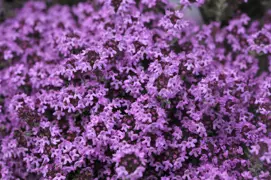
Creeping Thyme is a popular ground cover plant features impressive foliage and elegant flowers. They are generally trouble free, easy to grow, and very rewarding. Their versatility for growing in pots and growing as ground cover makes them well sought after. Follow our tips to get the most from your plants.
This series of articles answers many of the frequently asked questions about Creeping Thyme, such as how fast they grow, their hardiness, and more!
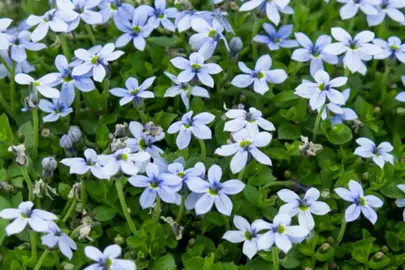
While Blue Star Creeper and Creeping Thyme are both fabulous ground cover plants, they do have a number of differences:
Growth Habit:
Foot Traffic:
Maintenance:
Flowers:
Fragrance:
Culinary Use:
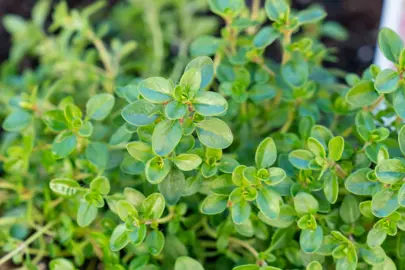
Thyme is a perennial herb that will grow back after being cut back. In fact, it is a good idea to prune thyme regularly to promote new growth and maintain its shape.
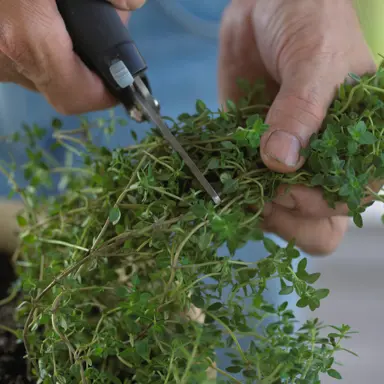
Being careful about how you pick Thyme will ensure it keeps growing. You want to pinch or cut the stems so there is at least 50 mm of green growth below the cut. This will encourage new growth to sprout from the cut points. Do not cut into the bare wood of the thyme plant as they may not sprout new shoots again and the stem may die. Also ensure that you are trimming from around the plant and taking no more than one-third of the foliage at any given time. The Plant Company recommends a little and often approach to trimming the plant. We also recommend feeding the plant with shrub fertiliser after trimming to help it recover and “bush up” nicely.
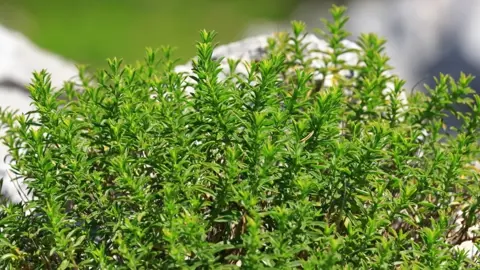
Creeping Thyme grows somewhat slowly initially, but quickly becomes a beautiful and functional ground cover. In the first year it may grow three times its original size to 15 cm in diameter. At year two it is likely to be 40-50 cm in diameter, and then 70-80 cm at year 3. This growth rate presumes a full sun position, watering during dry periods, and a well-drained and fertile soil.
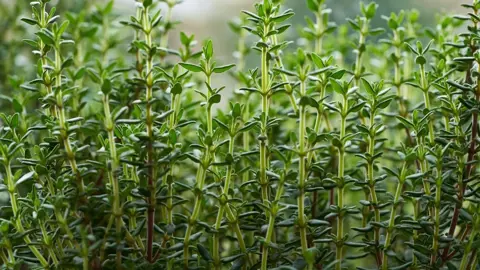
Creeping Thyme is not considered invasive. It spreads by stems rooting at contact points with the soil, but this spread is manageable. While it can fill in areas quickly, it typically stays within a defined area of 60-80 cm wide. Moreover, it doesn't aggressively spread via seeds or runners. This makes it relatively easy to control its growth by simply trimming or edging where it reaches unwanted areas. It also doesn't smother or outcompete native plants in a way that disrupts the natural ecosystem.

Creeping thyme is generally safe for cats. Reputable organizations like the ASPCA list creeping thyme (Thymus serpyllum) as non-toxic to cats. They add that consumption of creeping thyme in moderate amounts is unlikely to harm your cat. However, while rare, some cats might have a unique sensitivity to thyme. Look for signs of vomiting, diarrhea, or lethargy after exposure and consult a vet if you notice any.
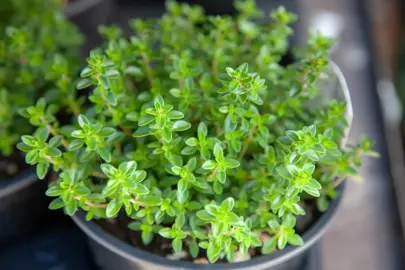
Thyme is a versatile herb that can be used for cooking, medicinal purposes, and ornamental purposes. These options and considerations are presented as follows:
It is a relatively easy-to-grow and care-for plant. Whether it is worth growing depends entirely on how you intend to use it.
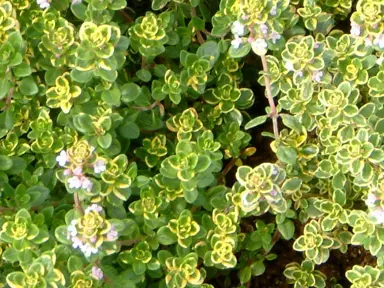
The list of Thyme varieties that The Plant Company has cataloged, worked on, propagated, and marketed is extensive. Our database of Thyme varieties is listed below:
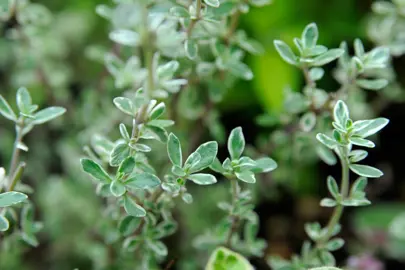
Thyme is a hardy plant that is relatively easy to grow, but it can be susceptible to a few common issues. Here are some of the most common problems you might face:
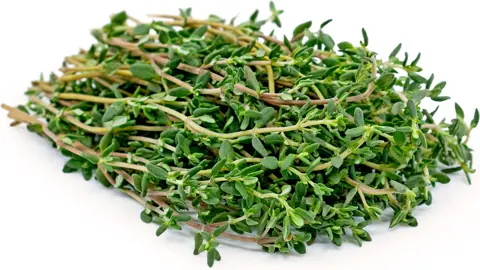
Three interesting facts about Thyme:
Thyme is an ancient herb with a rich history.
Thyme is a versatile herb with many uses.
Thyme is a relatively easy-to-grow herb.
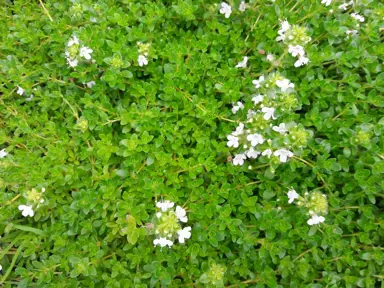
Thyme is a hardy perennial herb that can be purchased year-round. However, the best time to buy thyme is in the spring or early summer when the plants are actively growing. This is when you will have the widest selection of plants to choose from, and the plants will be well-established and ready to transplant into your garden.
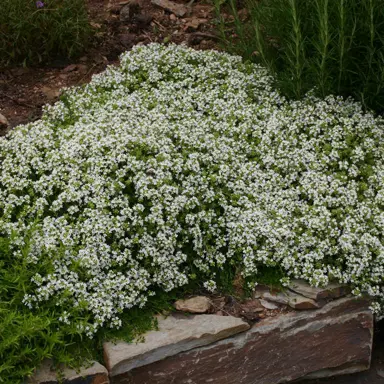
White Creeping Thyme (Thymus praecox 'Albiflorus') is a lovely variety of thyme known for its fragrant foliage and stunning white flowers. It's a popular choice for ground cover and border plantings. Some of its key characteristics include:
Overall, White Creeping Thyme is a versatile and low-maintenance plant that adds beauty, fragrance, and functionality to a garden.
Planting Creeping Thyme and getting them to grow well is generally easy when you get a few of the basics right. This involves planting them in the right soil type, choosing the most ideal planting position, selecting the best variety, and ensuring the plants have the essentials to thrive. The Plant Company has the right advice to ensure success when you are growing Creeping Thyme.
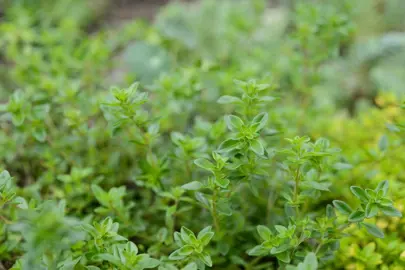
Yes, Thyme grows in New Zealand. In fact, New Zealand is one of the few places in the world where common thyme (Thymus vulgaris) grows wild. It is believed that thyme was introduced to New Zealand by early European settlers, but it has since spread to many parts of the country.
Common thyme can be found growing in a variety of habitats in New Zealand, including coastal areas, grasslands, and open woodlands. It is a hardy plant that can tolerate a wide range of conditions, including drought, poor soil, and exposure to wind and salt spray.
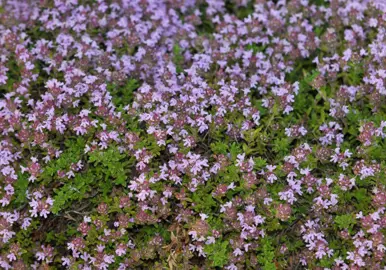
Creeping Thyme is a relatively easy-to-grow plant that can thrive in a variety of conditions. Here are some general guidelines:
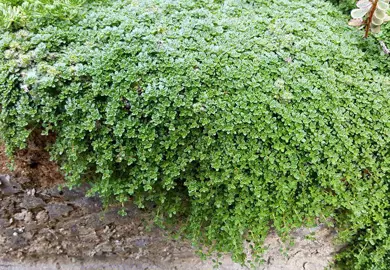
Creeping Thyme benefits from regular pruning to maintain its density and encourage new growth. They can be trimmed back at any time, though any time between spring and autumn is recommended by The Plant Company. Pruning usually involves cutting them back hard or shaping the plants by removing extraneous growth. The golden rule is that if you can still see leaves below where you are trimming, the plant will recover fine. If, however, there is no foliage, the chances of the plant resprouting may be 50%. Apply shrub fertiliser after trimming to help the plant recover from the procedure.
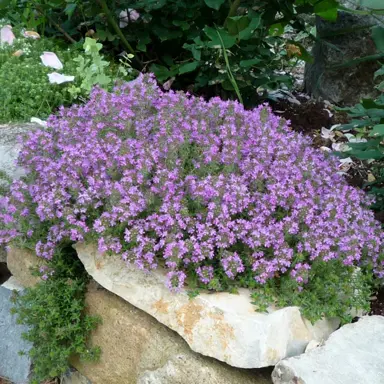
The best time to plant thyme is in the spring or early summer. This is when the soil is warm and there is plenty of moisture to help the plants establish themselves. Thyme is a hardy herb that can tolerate a variety of conditions, but it does best in well-drained soil with full sun to partial shade.
This series of articles answers many of the frequently asked questions about Red Creeping Thyme in NZ, such as how fast they grow, their hardiness, and more!
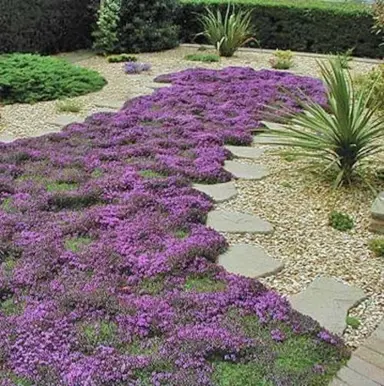
Red Creeping Thyme, also known as Thymus praecox 'Coccineus', is a compact ground cover plant. It typically grows to a height of 5-8 cm (2-3 inches) and a spread of 30-45 cm (12-18 inches) to create a dense carpet.
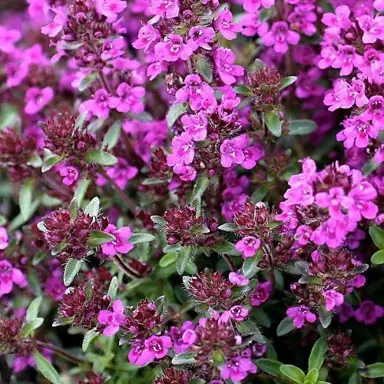
Red creeping thyme (Thymus praecox 'Coccineus') is a delightful little herb that is a low-growing perennial with stems that form a dense mat. It grows to a height of 5-8 cm (2-3 inches) and spreads 40-50 cm (12-18 inches).
Overall, Red Creeping Thyme is a low-maintenance and versatile plant that adds beauty, fragrance, and functionality to your garden.
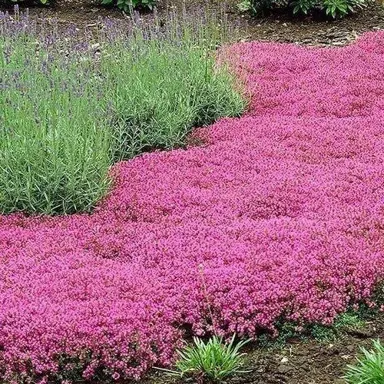
The Red Creeping Thyme in NZ is either Thymus serpyllum 'Coccineus' or Thymus praecox 'Coccineus', both commonly known as Red Creeping Thyme. They are versatile and vibrant creeping ground cover plant that are a popular choice for New Zealand gardens.
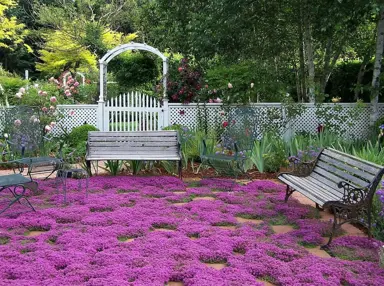
The best place to plant Red Creeping Thyme depends on how you want to use it and the characteristics of your garden. Here are some factors to consider to find that perfect spot:
Whether you need assistance finding the plant you’re looking for or you simply want to know more about who we are and what we do, we invite you to get in touch with us today. A member of The Plant Company team will get back in touch as soon as possible.
